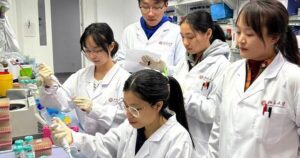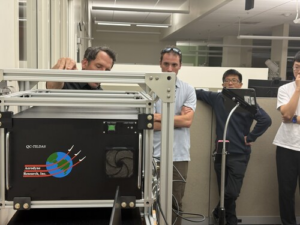
In an era where higher education is increasingly globalized, the challenge of teaching specialized content in English to non-native speakers is a growing concern. This issue is particularly pronounced in non-Anglophone countries that use English-medium instruction (EMI) to enhance international competitiveness. A recent study explores the potential of artificial intelligence (AI), specifically ChatGPT, to support terminology learning among linguistically diverse dental students in Malaysia.
Malaysia has positioned itself as a regional hub for international education, with initiatives like the Malaysia Education Blueprint 2015–2025 encouraging foreign student enrollment. At SEGi University, a significant number of Bachelor of Dental Surgery students hail from countries where English is not the primary language. These students often face linguistic hurdles in terminology-heavy subjects such as oral anatomy, where understanding complex vocabulary is crucial for clinical training.
AI as a Solution for Linguistic Challenges
Traditional supports like glossaries and supplemental language instruction have their limitations, often failing to meet real-time learning needs. AI tools, particularly those utilizing natural language processing, offer promising solutions. In dental education, where precision is key, platforms like ChatGPT can simplify complex terminology, provide context, and answer iterative queries in a non-judgmental environment. This can reduce cognitive load, allowing students to focus on core content.
AI tools also promote learner autonomy, an essential aspect of self-directed learning and motivation. When integrated into educational practices, these tools empower students to ask questions, receive feedback, and engage in self-regulated learning. However, the impact of AI-assisted learning is not uniform and can be influenced by individual cognitive-emotional profiles.
Understanding the Impact of Personality
Research indicates that personality traits significantly affect how students engage with AI tools. For instance, students with high levels of openness and agreeableness are more receptive to AI, while those with lower extraversion and neuroticism may exhibit less trust in AI-generated information. These findings suggest that engagement with AI like ChatGPT is shaped by individual differences.
“Students with high openness may be more willing to experiment with ChatGPT, while more anxious or less extroverted students may exhibit caution or resistance.”
Ethical Considerations and Faculty Involvement
While AI tools offer potential benefits, they also raise ethical concerns, such as overreliance on automated feedback, algorithmic bias, and data privacy risks. Without proper oversight, students may accept AI-generated explanations uncritically, compromising deeper learning. Structured, faculty-guided implementation is crucial to ensure ethical and pedagogically sound use of AI in education.
Faculty involvement is a key determinant of successful AI integration. Studies suggest that without faculty oversight, AI adoption can become inconsistent, especially if driven solely by students. Faculty engagement ensures that AI is used responsibly and that students develop critical appraisal skills.
Study Design and Methodology
This study employed a mixed-methods design to evaluate AI-assisted terminology support for international dental students at SEGi University. Participants included Year 1 and Year 2 Chinese international students enrolled in the Bachelor of Dental Surgery program. The study aimed to assess whether AI tools improve comprehension of dental terminology, how students engage with AI in a multilingual curriculum, and ethical considerations arising from AI use.
Students used ChatGPT over an eight-week period to support terminology comprehension in oral anatomy. Faculty involvement was limited to ensure the study’s exploratory nature and to avoid influencing student behavior. The intervention followed structured phases, including pre- and post-intervention assessments and focus group discussions.
Quantitative and Qualitative Findings
The study found significant improvements in terminology comprehension and student engagement. Pre-intervention scores averaged 10.4, while post-intervention scores increased to 16.1, indicating substantial improvement. Engagement scores also showed positive changes, reflecting enhanced levels of vigor, dedication, and absorption.
“A paired-sample t-test revealed a statistically significant increase in scores, t(34) = 11.28, p < 0.001, indicating a large effect size (Cohen’s d = 1.91).”
Qualitative findings from focus groups indicated increased clarity and confidence in understanding anatomical terms. Students appreciated the autonomy in using ChatGPT, describing it as a “private tutor” that responded without judgment. However, some expressed concerns about over-reliance and the accuracy of AI-generated content.
Implications for Future Research and Practice
This study demonstrates that AI tools like ChatGPT can provide accessible, personalized support for linguistically diverse learners, particularly in terminology-heavy subjects. However, AI should not be viewed as a standalone solution. A hybrid AI-human approach, incorporating faculty feedback and ethical policies, is essential for responsible AI adoption.
Future research should explore the longitudinal effects of AI-supported learning across diverse educational settings and examine the perspectives of educators, whose roles are pivotal in shaping the AI-learning ecosystem. It should also investigate how learner personality traits influence interaction patterns and engagement with AI tools.
As AI platforms become more accessible, structured training initiatives must be implemented to build AI literacy among both students and faculty. Attention to digital equity, algorithmic transparency, and ethical safeguards will be essential to ensure inclusive, context-sensitive adoption.
In conclusion, AI-assisted terminology learning can enhance comprehension and engagement among linguistically diverse dental students. However, its integration must be pedagogically sound and ethically guided to ensure responsible and sustainable use in educational contexts.







